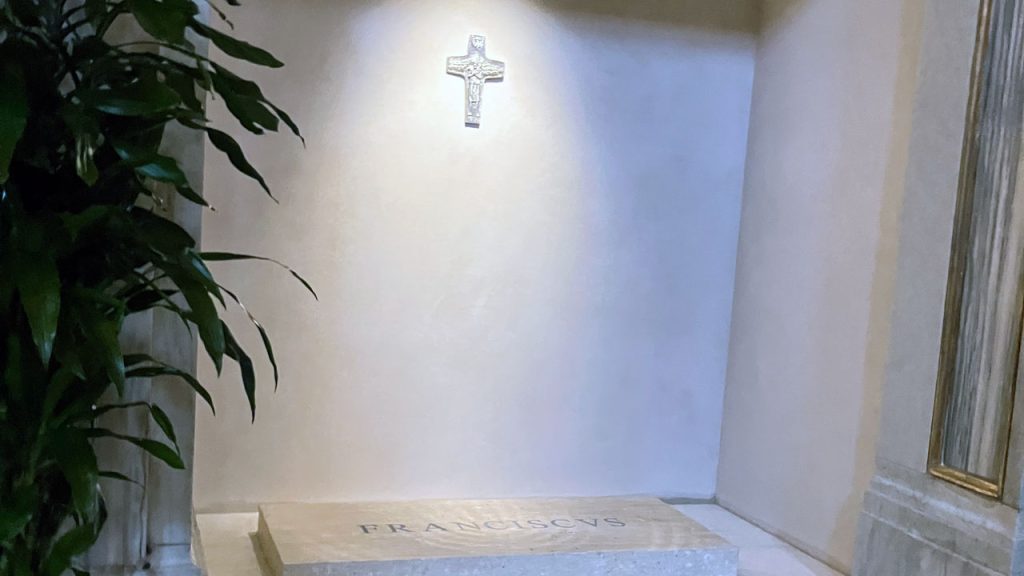With the passing of Pope Francis, many in the Fordham community mourned his death and reflected upon the impact of his papacy from afar. But Fordham economics professor Henry Schwalbenberg, Ph.D., director of the International Political Economy and Development graduate program, attended the pope’s memorial services and visited his tomb in person. Below are excerpts and photos from his online posts about his visit to Rome.
Pope Francis’ Wake, Friday, April 25
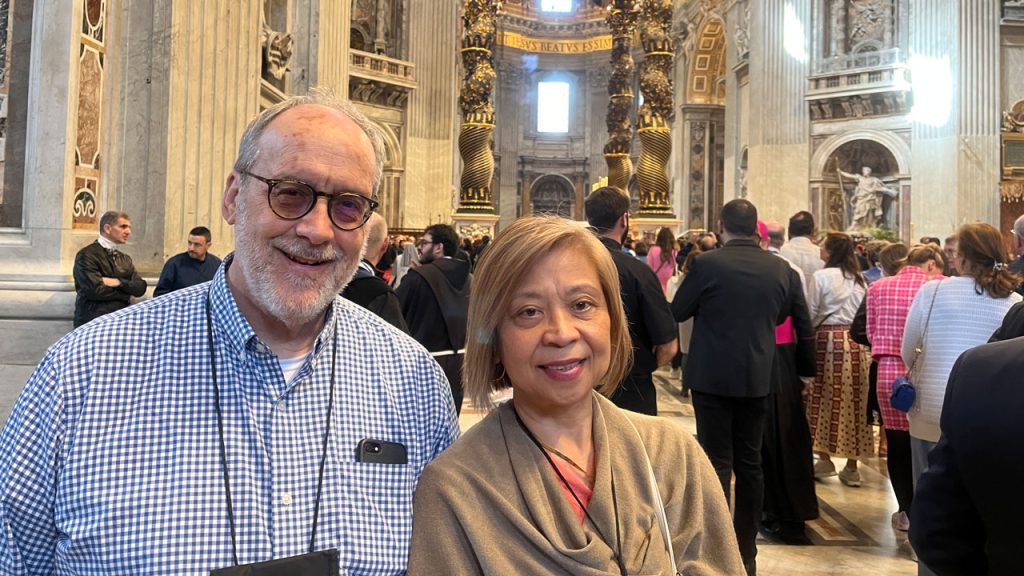
“I was one of the last ones privileged to stand before the body of our brother Francis. If you saw the news clip of Sister Geneviève shared by The New York Times, I stood exactly in the same spot where she stood on the right side of the open casket.
I believe that Sister and I came for the same reason, to thank God for the gift of Francis, a man so supportive of our varied ministries. In my case it was for his support of my students. Many of them have gone on to serve refugees, immigrants, the sick, and the hungry around the globe. And today they and we are facing such difficult challenges given the drastic changes in U.S. policies.
We all focus on different aspects when we view the Holy Father in life or in death. My wife looked closely at his hands and remembered his kind handshake. I focused on his face and I recognized my Jesuit teacher. I was especially drawn to his closed eyes and saw a man of peace.
Pax Christe.”
Memorial Mass, Saturday, April 26

“This evening in Rome we joined a memorial Mass for Pope Francis celebrated by Cardinal Dolan. After Mass, the Cardinal was swamped by New York media.”
Pope Francis’ Tomb, Sunday, April 27
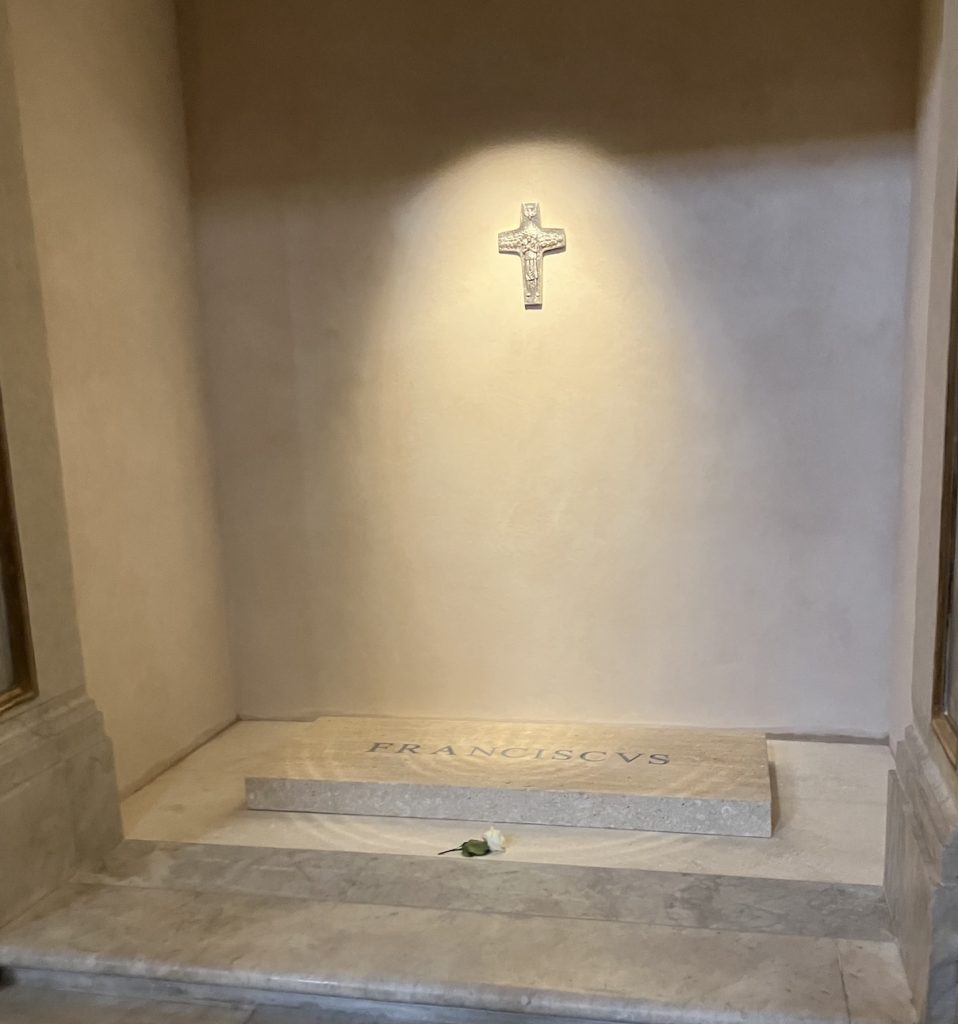
“For my final post from Rome, I have included three photos from my trip this morning to Pope Francis’ tomb.
The first is a photo of his burial site in the Church of St. Mary Major in Rome. It is a plain slab on the floor on the left side of the church. Over his grave is his cross that depicts Jesus as the Good Shepherd. It is a simple, calm, and meditative space that I hope to continue to visit in the future. It represents much of who he is—a contemplative and humble priest who models his life on Jesus the Good Shepherd.
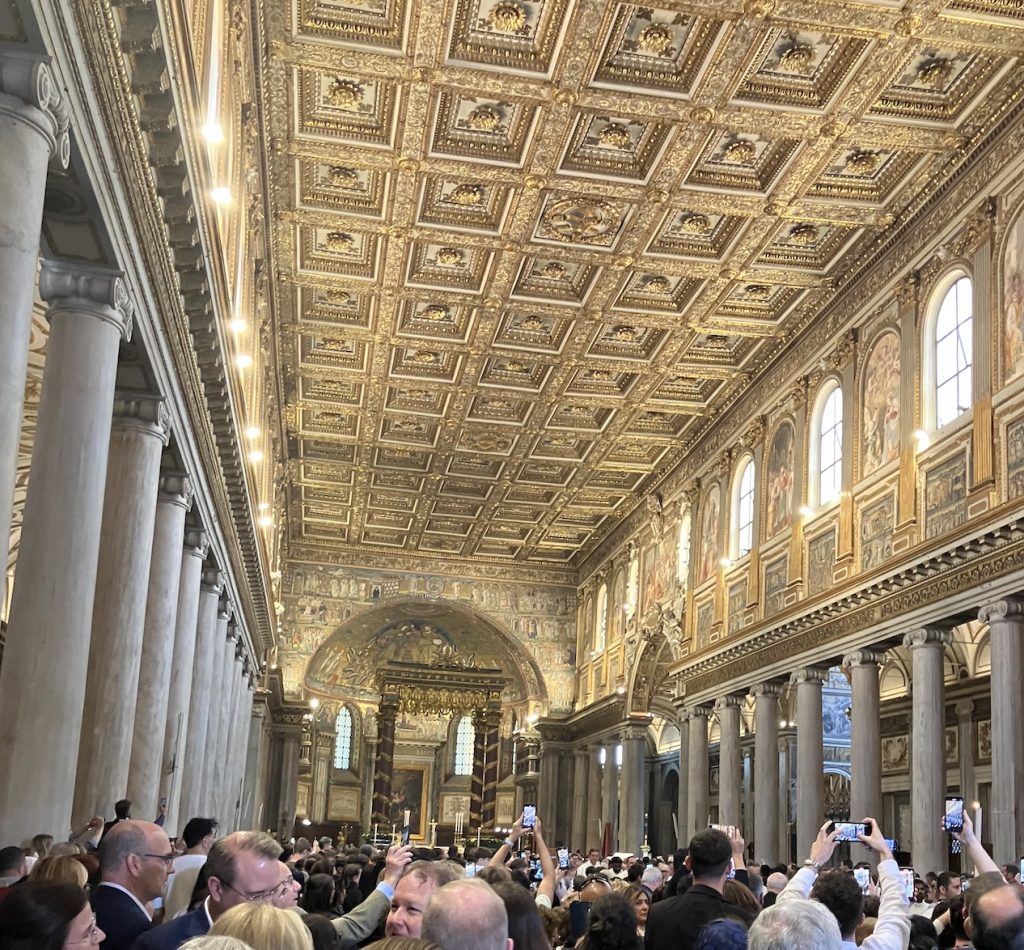
The second is a photo of the main nave of the church with thousands of people coming and going. It is noisy and chaotic. It is baroque with all its extravagance of gold and silver. The contrast with the tomb is breathtaking, but very consistent with Francis’ Ignatian spirituality. Francis is a contemplative in action amidst the seeming chaos and confusion of modern life.
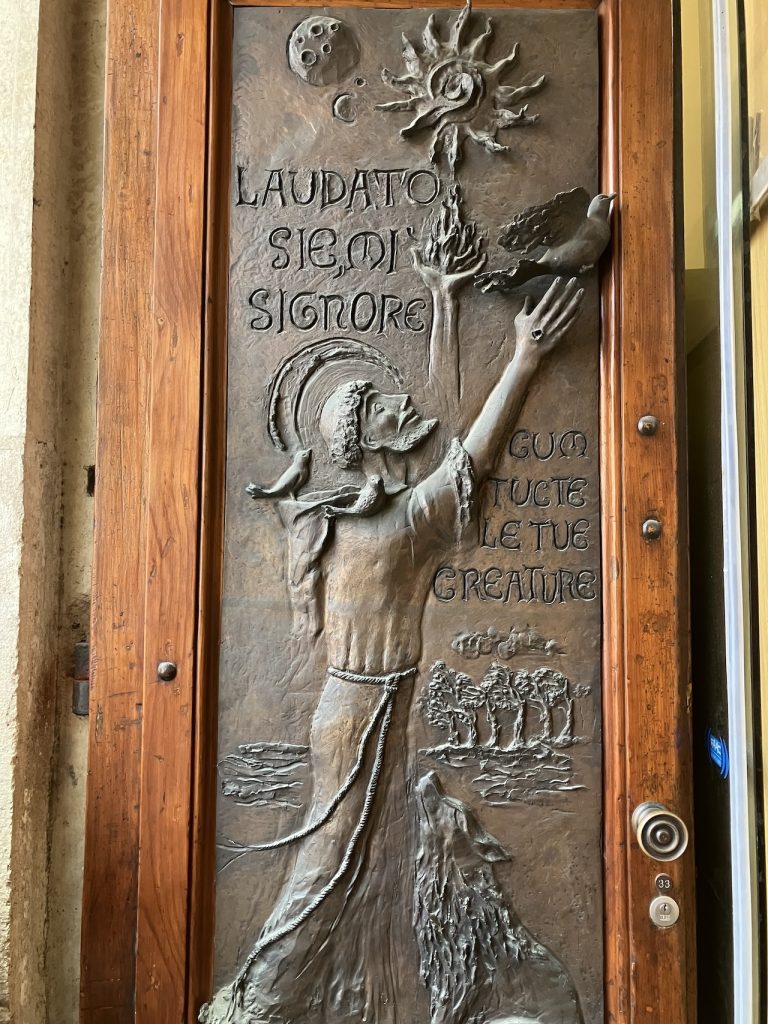
The third photo is Francis’ resolution of the contradictions between the first two photos. It is a photo of a door in the same church that very few will ever find or notice. If you need to use the restroom, you will probably pass quickly by it without ever observing it. The wooden door has a metal carving of St. Francis of Assisi proclaiming how all the wonders of creation give praise to God. There is the wolf and the birds, the forest and the sea, fire and the stars, and the moon and the sun. And carved into the door is the opening verse of St. Francis’ Canticle of the Creatures, “Laudato Si’.”
“Laudato Si’” is also the title of Pope Francis’ major writing on environmental justice. As a contemplative, reading the signs of the times and drawing on the mystical writings of his namesake, our Pope Francis sees the noise and chaos of the environmental destruction of our common home as the fundamental contemporary spiritual threat to human life.”

